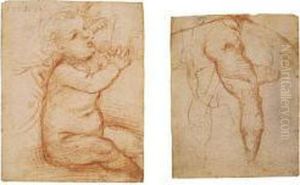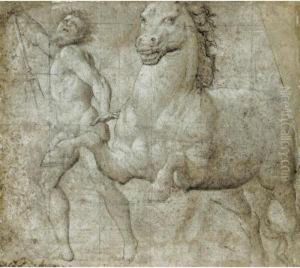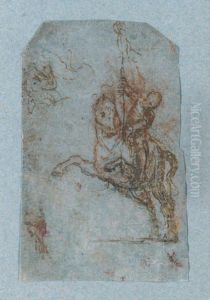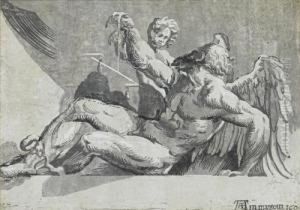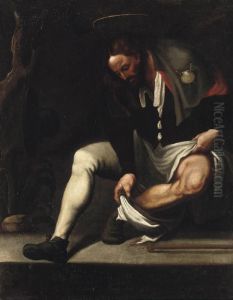Giov. Ant.De'Sacchis Pordenone Paintings
Giovanni Antonio de' Sacchis, better known as Il Pordenone after his birthplace Pordenone in Friuli, was an Italian painter of the Renaissance period. He is considered one of the most important Venetian painters of the 16th century, alongside Titian, whose influence can be discerned in his work. Pordenone was born in 1484 and started his career in the early years of the 16th century, initially influenced by the Venetian School, especially the works of Giorgione and early Titian, as well as the Lombard and Emilian schools.
His work is characterized by its dynamic compositions, bold use of color, and dramatic lighting effects, showcasing a transition from the High Renaissance to the more expressive Mannerist style. Pordenone was a contemporary of Titian, and there was a notable rivalry between the two artists, which spurred both to higher achievements. Unlike Titian, however, Pordenone was also influenced by the work of other Renaissance masters like Raphael and Michelangelo, which is evident in his frescoes and altar pieces.
Throughout his career, Pordenone traveled extensively across Northern Italy, working in cities such as Cremona, Genoa, and Ferrara, but it was in his native Friuli and nearby Venice where he left his most significant mark. His most famous works include the frescoes in the Cathedral of Cremona and the church of S. Stefano in Venice.
Pordenone's ability to convey emotion through his figures and his skillful use of perspective were highly praised by his contemporaries and influenced the development of Venetian painting. He was also among the first in Venice to introduce the dramatic chiaroscuro technique that would later be associated with the Baroque period.
Despite his contributions to Italian Renaissance art, Pordenone's work was somewhat overshadowed by the towering figures of his time, such as Titian and Michelangelo. However, his oeuvre has been reassessed and appreciated in more recent years for its originality and influence on the transition between the High Renaissance and Mannerism.
Pordenone died in 1539, leaving behind a legacy that, though underappreciated for centuries, represents a crucial link in the evolution of Venetian painting. Today, his works are celebrated for their vibrancy, emotional depth, and innovative approach to composition and light.
